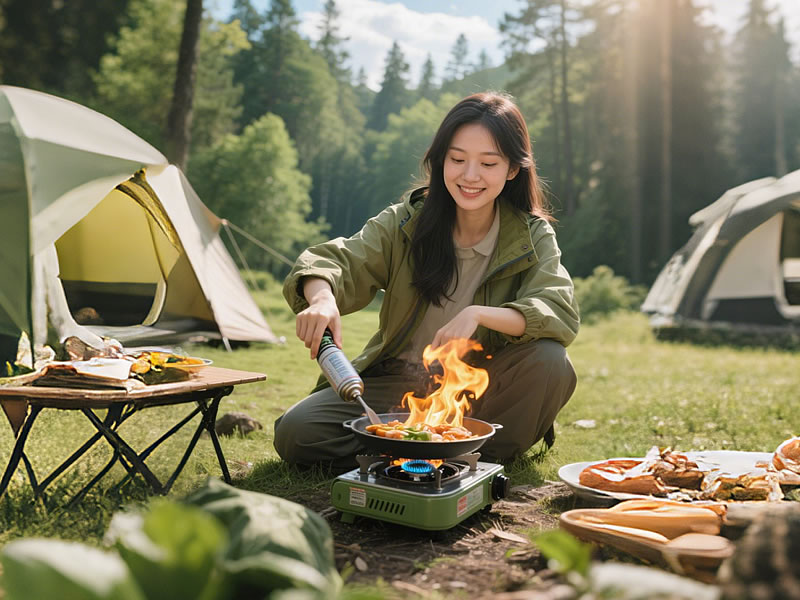Camping stove safety tips for beginners?
Nothing ruins a camping trip faster than a preventable stove accident. Each year, hundreds of outdoor enthusiasts learn the hard way that camping stoves demand respect. Whether you're using a simple canister stove or a complex liquid fuel system, these professional safety protocols will keep you protected in the wilderness.

The 7 Non-Negotiable Safety Rules
- The 3-Feet RuleMaintain clearance from tents, dry grass, and gearUse a fireproof mat (like MSR's Heat Shield) under your stoveNever cook under low-hanging branches
- Carbon Monoxide KillsSymptoms: Headache, dizziness, nausea (evacuate immediately)Safe Zones: Cook at least 10 feet from sheltersDetection: Carry a battery-powered CO alarm (Kidde makes portable models)
- Stable Setup ProtocolUse integrated legs or a stove stand on uneven groundThe pot-to-stove ratio: Your cookware should never extend >2" beyond the burnerWind management: Position stoves perpendicular to gusts or use a windscreen
Fuel-Specific Dangers
| Fuel Type | Unique Risks | Prevention |
|---|---|---|
| Propane | Canister freeze/explode in heat | Store below 120°F; keep in shade |
| Butane | Poor cold weather performance | Pre-warm canisters in jacket |
| White Gas | Spillage fires | Use funnel when refilling |
| Alcohol | Invisible flames | Dip stick to check fuel level |
The 5-Minute Pre-Trip Safety Check
- Leak Test: Apply soapy water to connections - bubbles indicate leaks
- Jet Inspection: Ensure burner ports are clear (use a needle tool)
- O-Ring Check: Replace cracked or stiff seals
- Fuel Line Exam: Look for cracks or kinks in hoses
- Ignition Test: Verify auto-igniters work (carry backup matches)
Emergency Response Guide
- Fuel Fire: Smother with baking soda or fire blanket - never use water
- Tip-Over: Turn off fuel at source first, then address flames
- Burns: Immediately cool with clean water for 10+ minutes
- Gas Leak: Don't ignite - ventilate area and replace faulty parts
Beginner Mistakes to Avoid
❌ Cooking in vestibules (CO builds up fast)
❌ Overfilling liquid fuel tanks (leave 20% air space)
❌ Using damaged canisters (dents compromise integrity)
❌ Wearing loose clothing (synthetic fabrics melt)
Pro-Level Safety Gear
- Fire Extinguisher: Kidde FA110 (compact ABC-rated)
- Heat-Resistant Gloves: Grizzly Grip 1472F (with wrist straps)
- Fuel Spill Kit: Absorbent pads + sealable bag
- Burn Kit: Water-jel dressings + antiseptic wipes
FAQs
Q: Can I use my stove inside a screened shelter?
A: Never - screens don't prevent CO accumulation. Cook in open air only.
Q: How do I safely dispose of old fuel?
A: Contact local hazardous waste facilities - never pour on ground or in water.
Q: Are butane canisters safe in hot cars?
A: Extremely dangerous - temperatures above 100°F can cause explosions.
The Safety Mindset
Treat every camping stove like a loaded gun - with constant awareness and respect. Practice emergency drills at home, educate your group, and always have two escape routes from your cooking area.
Remember: The wilderness forgives no mistakes. Your safety habits today determine your survival odds tomorrow.
Stay alert, stay prepared, and cook with confidence!






